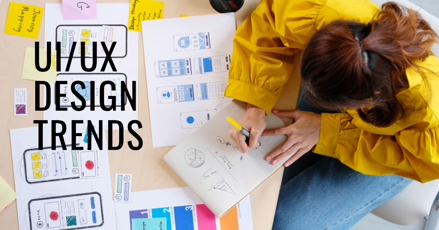AI is shaping the future of design with latest shocking developments
Artificial intelligence (AI) has been a game-changer in the design industry, revolutionizing the way designers work and helping to create stunning and unique designs that were once only possible in dreams. From predicting trends to creating complex designs in a matter of seconds, AI is shaping the future of design.
One of the most significant benefits of AI in design is its ability to analyze large sets of data and identify patterns, which can help designers create more effective and targeted designs. By analyzing user behavior and preferences, AI can help designers create personalized experiences that resonate with users and keep them engaged.
Another way AI is changing the design industry is through the creation of generative design. This technique involves the use of algorithms to generate complex designs based on specific parameters, such as size, shape, and material. By using AI, designers can create intricate and innovative designs that would be impossible to create manually.
AI is also helping designers to create designs faster and more efficiently. By automating repetitive tasks, such as resizing images or formatting text, designers can save time and focus on more creative aspects of the design process. This not only helps designers work more efficiently but also allows them to produce more high-quality designs in a shorter amount of time.
Some great tools are:
1. Adobe Sensei: Adobe Sensei is a suite of AI-powered features that are built into Adobe's Creative Cloud products, including Photoshop, Illustrator, and InDesign. These features enable designers to automate repetitive tasks, such as selecting and masking objects, and to create complex designs more quickly and efficiently.
2. Canva: Canva is an online design tool that uses AI to help users create professional-looking designs quickly and easily. Canva's AI algorithms can suggest layouts, colors, fonts, and images based on the user's preferences and the content of their design.
3. Figma: Figma is a collaborative design tool that uses AI to help designers work more efficiently. Figma's AI features include automatic layout suggestions, smart resizing, and the ability to generate code from designs.
4. Sketch: Sketch is a vector graphics editor that includes AI-powered features such as smart layout suggestions, dynamic resizing, and data-linked design elements. Sketch also integrates with other AI-powered tools such as InVision and Zeplin.
5. Artisto: Artisto is an AI-powered app that allows users to transform their photos and videos into artistic creations. Artisto uses neural network algorithms to apply various filters and effects to the user's content, creating unique and eye-catching designs.
AI design tools are changing the way designers work by automating repetitive tasks and allowing them to focus on more creative and strategic aspects of their work. With the help of AI, designers can create more complex and sophisticated designs in less time, and with greater accuracy and consistency. As AI technology continues to evolve, we can expect to see even more advanced and powerful AI design tools in the future.
Moreover, AI can assist designers in predicting future trends and consumer preferences. By analyzing large amounts of data from social media, search engines, and other online platforms, designers can gain valuable insights into emerging trends and adjust their designs accordingly.
One of the most exciting developments in AI and design is the integration of AI-powered tools into design software. Tools like Adobe's Sensei and Autodesk's Dreamcatcher allow designers to create designs with the help of AI, making it easier to experiment with different ideas and explore new possibilities.
AI is also playing a crucial role in improving accessibility and inclusivity in design. By using AI-powered tools, designers can create designs that are more accessible to people with disabilities, such as those with visual impairments. For example, AI can help designers create designs with better color contrast and readability, making them easier to use for people with visual impairments.
In conclusion, AI is changing the future of design in numerous ways, from helping designers create more personalized and engaging experiences to predicting trends and creating intricate designs. By using AI-powered tools and techniques, designers can work more efficiently, create better designs, and ultimately provide more value to their clients. As the technology continues to evolve, we can expect AI to play an even more significant role in the design industry in the years to come.





0 Comments